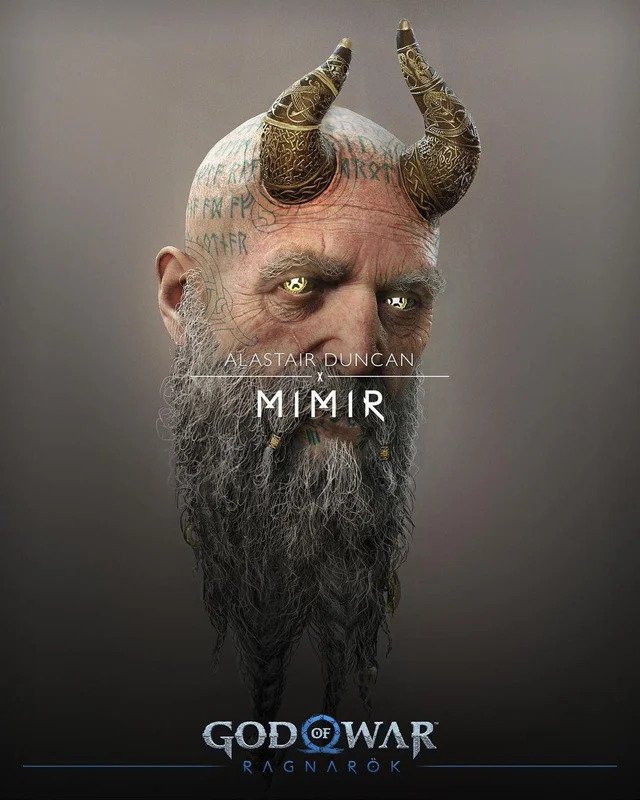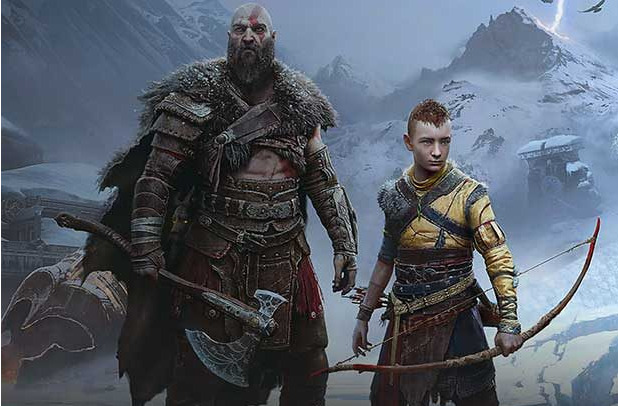By Mickail Thomas
After the release of God of War (2018), the sequel was guaranteed to follow the events of Ragnarok, the fated end of everything within Norse mythology. And truly, it was a mythological end that makes its peers in gaming look meek in comparison. Spoilers for God of War (2018)!
God of War (GoW) fans know we follow Kratos, the titular God of War, through most of the games. However, Atreus is a new addition to the roster. He is Kratos’ son, and he is one of the most vital characters to God of War: Ragnarok — also known as simply, Ragnarok.
Ragnarok is an incredible game, but it’s an even better sequel. However, due to its nature as a sequel, a lot of spoilers for GoW are integral to explaining anything about Ragnarok. Read ahead with caution!
Now, there are three main parts to this game I’ll be discussing, because I believe they’re what make this game so much fun. The story, the characters, and the gameplay.
And because it had to be said, the game is absolutely gorgeous, beyond belief. It is one of the best looking games I’ve ever played, and with the proper system and television, the game pops to incredible degrees.
The musical score of the game is also notable, although it’s far from the best part of the game.
Now, let’s get into my personal favorite part of Ragnarok….
The Story
One of the largest fears I had for Ragnarok was how it was going to deal with being a sequel to another game. I wondered if it would act like the events of the former game hadn’t happened, or if it would just pick up where the last game left off.
As it turns out, it was neither. This game takes place a few years after the events of the first game, and it doesn’t baby the players into remembering. There’s an option on the homescreen to review the first game, but beyond that, it’s up to the players to remember.
And the story starts off incredibly, with an event that feels memorable and old faces that want Kratos gone. Now, I won’t be going over the events of the entire story, but one of the most incredible things about Ragnarok is their use of information from Norse mythology.
Fans of mythology may note that Fenrir swallowing Odin is one of the major events in the original mythology of Ragnarok. As such, I went into God of War: Ragnarok expecting the story to introduce Atreus to a wolf by the name of Fenrir, who would then go on to eventually eat Odin.
However, within the first hour of the game, we learn that Atreus already has a wolf named Fenrir. And we learn that Fenrir is sick. Not too long after seeing that wolf, it passes away. It’s a sad scene that creates something incredible as we approach the end of the game.
Within minutes, Ragnarok manages to subvert expectations about its story, and it doesn’t stop being unpredictable there. The story makes the game intriguing and incredibly hard to put down, not just during the main story segments, but even when learning about information about the side characters.
And speaking of them….
The Characters
God of War has a fun and interesting cast of characters. Just to list a few:
Kratos, the once God of War. Now he tries to live a simpler, quieter life with his son, Atreus. He has a sense of tough love, but he clearly just wants the best for his son. Compared to the previous game, Kratos has a much easier time understanding his son, because he no longer needs to work alone.

Santa Monica Studio
Atreus, the son of Kratos and Faye. He has a lot of fears about his future and his destiny, and because of this, he makes an abundance of errors that would be easily avoidable. Despite this, he’s an extremely charming and understandable character who wants the best for the people around him, no matter what it takes.
Faye is a character we never see in the first game, but in the second one, she’s a pillar of reliability for Kratos, appearing to him in dreams. The impact she made in the past of the games is not forgotten despite her lack of a consistent presence.

Santa Monica Studio
Mimir is the Smartest Man Alive, and he is a remarkable presence for this game. He’s witty, useful, and still tells the best boat-time stories around. And we get to learn more information about him in this game, giving him depth unfound in the previous entry.
And there’s more! From Aesir to Vanir, every realm has characters who make things interesting in one way or another.
And in one of those realms, there are the trials of Muspelheim, which leads to….
The Gameplay
The game plays with genuinely astonishing fluidity. After the first game, the game only gets better. Additionally, with the option of difficulty in the game, players can personally choose how hard they want the game to be.
One of the biggest gripes in the first game was the abundance of trolls which are fought. They’re essentially the main boss fights for the game, and after the third time fighting them, they can feel boring or overly predictable, if not just outright frustrating.
Ragnarok solves that by almost entirely getting rid of trolls, and instead replacing them with many other boss types. The gameplay stays fun and fresh, and even after 50+ hours, I only wish I could’ve spent more time fighting.
Without saying anything specifically, the game has more variety than just Kratos’s moveset.
And, just like the former entry, this game’s Muspelheim trials are incredible experiences that test the limits of the player’s capabilities.
Truly, the gameplay makes the game an even better experience than the first game.
Overall
God of War: Ragnarok is a beautiful game that builds incredible characters and set pieces, and lets the players enjoy such spectacles without being frustrated or disappointed. It truly is an amazing game.
Now, we’ll have to wait and see whether it’ll win Game of the Year.
Tags: arts & entertainment, Game Review, Mickail Thomas, redwood gigantea, redwood high school, redwood journalism, review


